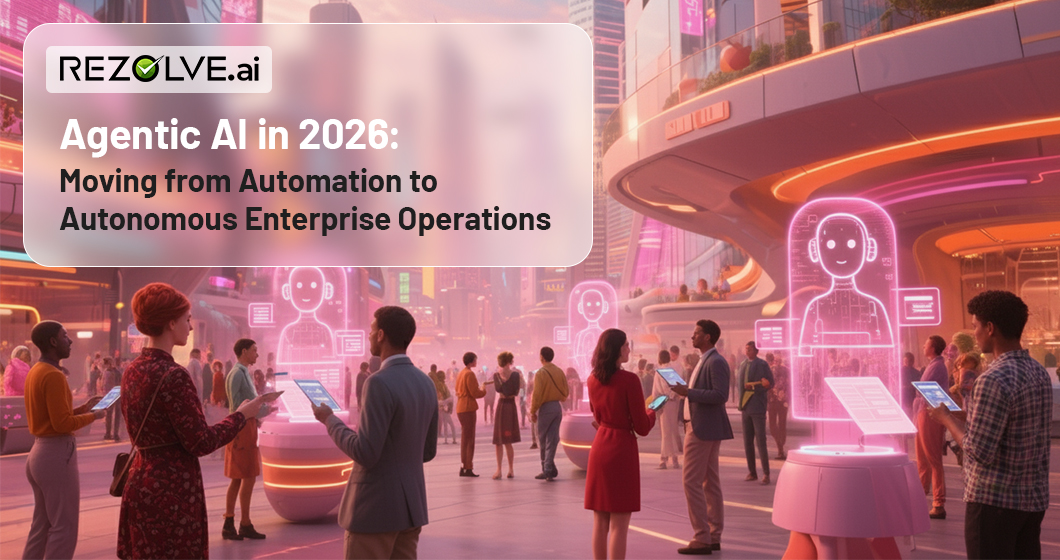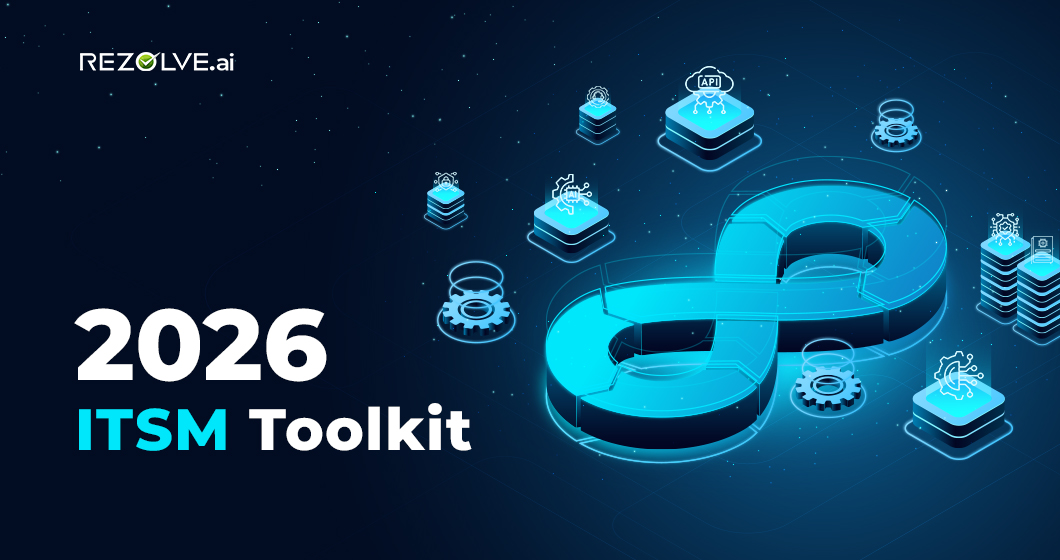Think about stepping into your office on a Monday morning and instead of a torrent of emails or an unending to-do list, you are welcomed by a personalized AI assistant that has already set up your priorities, optimized your schedules for meetings, and has answers to your queries. This may sound like a scene from a science fiction movie but AI chatbots which are embedded with a sense of personalization are fast becoming a reality in the workplace.
AI can do more than just automate processes, it can elevate human communication to a new level through excellent personalization. From dealing with busy work activities, addressing technical inquiries, to even facilitating user-specific courses, virtual AI chatbots are revolutionizing the way the workforce interacts with technology and improving productivity in hitherto unimaginable ways.
Check out this blog, a subject that leans into AI personalization, workplace efficiency, and real-world applicability of chatbots. Ready to see how these virtual assistants are reshaping the modern workplace? Let’s hop on.
What Is AI Personalization?

AI personalization is tailoring interactions, solutions, and recommendations based on user data, behavior, and preferences. Unlike the one-size-fits-all approach of traditional systems, AI personalization uses machine learning algorithms and predictive analytics to create unique experiences in context.
In the context of AI chatbots, personalization means understanding user queries, anticipating needs, and offering precise solutions. These chatbots analyze past data, user behavior, and organizational workflows to provide tailored assistance. For example, an IT support team chatbot that can remember previously submitted tickets by an employee and suggest solutions accordingly will make the support experience much faster and intuitive.
The Link Between AI Personalization and Employee Productivity
.avif)
AI personalization impacts employee productivity in several direct ways:
- Streamlined Workflows: By understanding individual roles and responsibilities, AI-powered chatbots can suggest improved workflows and therefore reduce time spent on repetitive tasks.
- Quick Access to Information: Employees receive accurate answers from personalized AI chatbots; hence, no more searching through vast databases.
- Better Decision-Making: Personalized insights give employees the ability to make better, faster decisions without creating bottlenecks.
- Better Engagement: The employees will use the tools more if they know and respect their preferences, hence ensuring that they are motivated and effective.
For instance, a chatbot that "remembers" an employee's preferred communication style or frequently used tools can drastically reduce friction in day-to-day operations.
Key Features of Virtual AI Chatbots
AI chatbots are a new technology with features that bring in strong personalization and productivity for the workplace. These capabilities will not only empower employees but also smooth operations to help organizations reach efficiency at scale. Now, let's get into the details of the most important features that make these chatbots indispensable.
.avif)
Natural Language Processing (NLP)
One of the important backbones of AI chatbots is that they are able to understand and speak human language or at least emulate them. NLP allows a chatbot to realize the intent of a query even if it is written conversationally or with typos; thus, this makes communication perfect and allows the employees to engage with a chatbot as a colleague.
For instance, an employee can ask, "Can you set up a meeting with the marketing team next week?" and the chatbot understands the intent behind the request, checks the calendars, and sets up the meeting without requiring any more details.
Context Awareness
Unlike the traditional chatbots that respond in isolation, virtual AI chatbots are context-aware. They remember past interactions and use that knowledge to provide more relevant and accurate responses. For example, if an employee had asked for a policy document earlier, the chatbot might follow up with related resources or updates about that policy.
This feature especially comes in handy in complex workflows, where it saves time and frustration in keeping the continuity of conversations.
Integration with Workplace Tools
The modern workplace is based on a host of tools for communication, project management, and data analysis. In this respect, AI chatbots are integrated with those platforms like Microsoft Teams, Slack, Jira, Salesforce, and many more to offer employees a way to access multiple functionalities through one single chatbot interface.
A chatbot in a project management application can be used to provide an update on task deadlines, the assignment of responsibilities, or even fetch performance analytics—all without having to switch between platforms.
Adaptive Learning and AI Training
AI-powered virtual chatbots are continuously using adaptive and learning machine learning algorithms; over time, they learn from user behavior, preferences, and feedback to deliver more accurate and personalized interactions.
If a particular employee always requests a certain format in the reports, the chatbot can anticipate the same in the future conversations. Such adaptability ensures the chatbot becomes increasingly intuitive the longer it is in use.
Task Automation
A big part of any employee's day inevitably goes into performing mundane and repetitive tasks. This is where virtual AI chatbots excel. Right from scheduling meetings, preparing reports, password resets to answering routine questions, AI chatbots can automate many tasks with significant ease.
When an employee needs to reset a password, the chatbot can easily walk the employee through the quick automated process of doing so in just minutes—instead of creating a ticket that has to be acted upon by IT support, which can take a couple of hours. Automation saves time but decreases the workload of both the IT and HR teams.
Personalized Support
Personalization is the core of AI chatbots. The systems have complex algorithms that allow them to tailor their responses, suggestions, and actions for each user. For example, a chatbot can prioritize tasks according to an employee's role, department, or past behavior.
For example, if a salesperson often requests CRM data, the chatbot can prioritize tasks around CRM so that they can access critical information more quickly. This level of personalization leads to a much more efficient and user-friendly experience.
Multilingual Support
In global settings, language barriers can be one of the biggest challenges to collaboration and support. AI chatbots with multilingual capabilities meet this challenge by offering support in multiple languages.
This feature ensures that staff from different regions can interact with the chatbot in their preferred language, hence making it more usable and inclusive.
24/7 Availability
Unlike human support teams, AI chatbots are available around the clock. This assures that staff may get help at any time, unconstrained by time zones or business hours.
Think of an employee who may be facing a technical problem in the middle of the night in another timezone; on the spot, the chatbot will solve the problem to avoid any downtime and ensure productivity.
Real-time Analytics and Insight
One feature that makes virtual AI chatbots amazingly impressive is the ability to derive actionable insights in real time. These systems analyze data from interactions in order to identify trends, measure performance, and highlight potential bottlenecks in workflows.
For example, managers can use the reports generated by chatbots to track team productivity or pinpoint recurring issues that need attention. This will enable organizations to make decisions based on data in order to optimize their operations.
Scalability
As an organization grows, its operational needs change. AI chatbots are designed to scale with ease and can handle increased volumes of queries, tasks, and users without a loss in performance.
Such scalability makes them the perfect solution for any business, from a startup to a multinational corporation. Specially, during peaks in the business, such as product launches or year-end reviews, there is no need to bring in additional resources to handle requests by chatbots.
Productivity Use Cases of Virtual AI Chatbots
The virtual AI chatbot is now in operation across industries, redefining workplace operations. Let us now look into the real-world applications of these chatbots.
Automation and Helpdesk IT Support
In an IT environment where employees are quite often hit with technical glitches, AI chatbots become the first line of support. They can:
- Troubleshoot Common Issues: From diagnosing network errors to walking users through system configurations, AI chatbots provide instant solutions to common technical problems.
- Automate Password Resets: Instead of raising a ticket and waiting for hours, employees can have the option of secure, automated password resets through chatbots.
- Proactive System Alerts: Chatbots keep track of IT systems and inform users of any possible threats or updates, averting bigger disruptions.
For example, an ITSM-platform based AI chatbot can handle almost 70% of the queries independently from employees and helps to clear the helpdesk workloads for improving response times.
HR Support and Employee Onboarding
HR functions are among the most beneficiaries when it comes to virtual AI-based chatbots and especially large forces. Some abilities include:
- Reducing Complexity: Guide the employees through the processes of onboarding, relevant forms, FAQs, and even automation of task allocation.
- Policy Guidance: The chatbot can be queried by employees for policies, leave balances, benefits, and more without having to wait for HR personnel.
- Training Recommendations: AI chatbots can look at an employee's skills and suggest appropriate training programs or resources to further their professional development.
This saves not just the HR teams' time but also makes the experience of employees more engaging and personalized.
Sales Enablement and Customer Interaction
Most sales teams juggle several client interactions, follow-ups, and analysis. This is where Virtual AI Chatbots simplify the said processes by:
- Providing Customized Recommendations: It analyzes customer data in order to recommend the most suitable products or services.
- Automating Follow-Ups: The bots are also programmed to schedule and deliver follow-up messages to the leads, hence keeping no lead slipping through the crack.
- Providing Insights: Based on different metrics of sales and customer behavior, chatbots help salespeople make informed decisions.
For instance, an e-commerce platform can utilize AI chatbots to assist customers in finding products related to their preferences while simultaneously updating the sales teams with lead scores.
Multi-Channel Customer Support
AI chatbots are revolutionizing customer service by offering support across multiple touchpoints, including websites, apps, and social media platforms. They do the following:
- Offer 24/7 Support: The customer can be supported at any time, ensuring that his or her problems are solved even outside business hours.
- Understand Context: By using NLP and contextual awareness, chatbots recognize customer history and preferences, thus making interactions more relevant and efficient.
- Handle High Volumes: During peak periods, the chatbots answer thousands of customer queries simultaneously to help bring down the waiting time and increase the rates of satisfaction.
A couple of instances where a telecom service provider can put AI chatbots into use include customer inquiries regarding billing or connectivity issues or even plan upgrading by customers.
Healthcare Administration and Patient Support
In healthcare, AI chatbots are largely important in administrative and patient care tasks. Key use cases include:
- Appointment Scheduling: It becomes easy for patients to book or reschedule appointments, hence reducing administrative delays.
- Symptom Checkers: Chatbots take patients through symptom assessments and advise on whether to see a physician.
- Administrative Assistance: From answering billing questions to providing insurance information, chatbots ease the workload of healthcare staff.
Through this automation, healthcare providers make their services faster and more efficient, hence improving patient satisfaction.
Best Practices for Implementing AI Chatbots in the Workplace
.avif)
Despite understanding the advantages that AI chatbots can offer, there are certain best practices that must also be considered in tandem to ensure optimal results. These are:
- Have a Clear Intent: Ask yourself what are you looking to achieve from the chatbot, a boost in productivity, decreased operating costs or an enhanced worker engagement.
- Select Appropriate Software: Ensure that the chatbot software selected can align with the company goals and goals and support the existing tools available in the organization.
- Ensure Data Security: Enforce solid measures and protocols that protect organizational and employee data for privacy purposes.
- Instruct Users: Make sure the employees are fully trained and educated on how to use the chatbot to its full form, this can include online classes and troubleshooting.
- Evaluate Application Efficiency: Consistently evaluate how well the chatbot is functioning and gather necessary feedback to ensure further development to the system.
Final Thoughts
The phenomenon of employing virtual AI chatbots at workplaces has changed the method of personalization and productivity in workplaces. Personalized virtual AI enabled tools will give employees some leverage to construct their work to be smarter instead of harder.
There are endless AI personalization options available today and as these technologies advance, the amount will only expand. By embracing organizational change, there is an immense potential to reap rewards in efficiency, engagement, and technological innovation.
FAQs
What is the major benefit of AI personalization in chatbots?
AI personalization ensures that chatbots deliver tailored responses and solutions, improving efficiency and user satisfaction.
Can virtual AI chatbots perform complex tasks?
Yes, modern chatbots with advanced AI are capable of executing complex tasks involving troubleshooting, data analysis, and even workflow automation.
Are AI Chatbots secure for use at the workplace?
With proper implementation of encryption, access controls, and compliance measures, AI chatbots are secure for workplace use.
How do chatbots enable employees to become more productive?
The chatbots automate repetitive tasks, provide quick solutions, and offer personalized assistance, hence reducing manual effort and saving time to increase productivity.
Which industries can be served best through virtual AI chatbots?
IT, HR, health, retail, and finance happen to be among the sectors that can capitalize greatly from virtual AI chatbot adoption.


.avif)



.webp)




.jpg)

.png)








.png)